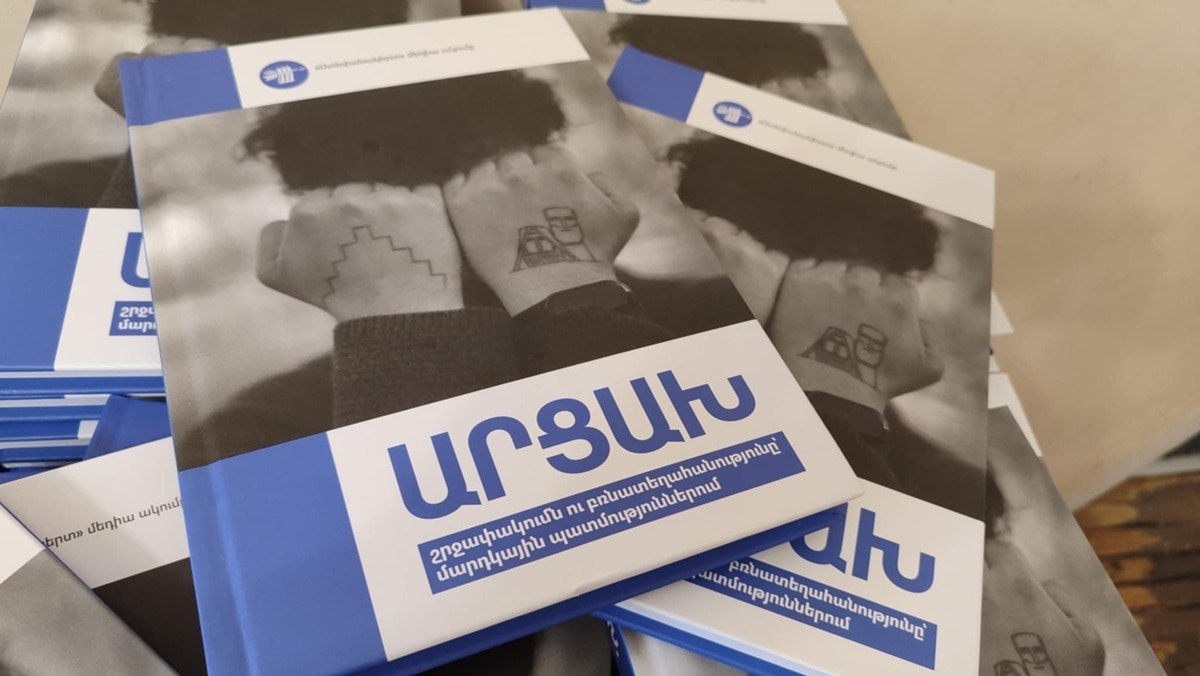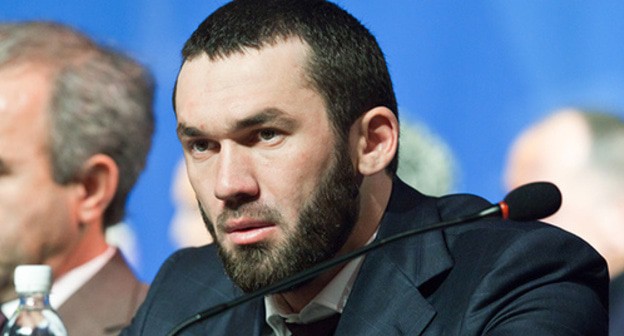Book about refugees from Nagorno-Karabakh presented in Yerevan
More than a hundred stories of refugees from Nagorno-Karabakh are collected in the book entitled “Artsakh: Blockade and Forced Displacement in Human Stories”. The facts presented in the book should become evidence in international courts, journalists claim.
On May 29, the “Stepanakert” Media Club presented in Yerevan the book entitled “Artsakh: Blockade and Forced Displacement in Human Stories”.
“The book summarizes the stories of more than a hundred Armenian families forcibly displaced from Artsakh (the self-name of Nagorno-Karabakh). The main goal has been to show that in addition to statistics and figures, there are also stories of real people, personal tragedies that are important from the point of view of historiography and must definitely be on the list of historical studies for future research. All the stories are facts that reflect the entire tragedy of the blockade, war, and forced exodus,” the “Caucasian Knot” has been told by Gegam Bagdasaryan, the chairman of the “Stepanakert” Media Club and the editor-in-chief of the “Artsakh: Blockade and Forced Displacement in Human Stories” book.
Gegam Bagdasaryan has emphasized that the book was published on the initiative of European partners in a print run of 300 copies in Armenian and Russian. Some stories have been translated into English and are available online. Copies of the book will be distributed free of charge to the families whose stories are reported in the book and to all interested people and organizations.
“The stories have been documented by a group of Artsakh journalists. The managers and other participants of the programme have become part of the factual documentation of the history,” Gegam Bagdasaryan noted.
He has also added that although the “Stepanakert” Media Club is not legally the successor of the Stepanakert Press Club, it works with the same goals. The event has been organized thanks to the efforts of the “Stepanakert” Media Club’s employees and partners.
The publication of the book with the stories of refugees from Nagorno-Karabakh is the organization’s first major project after the forced displacement, notes journalist Tatevik Khachatryan, the manager of the “Stepanakert” Media Club.
“Initially, it was not planned to publish a book. However, later, we decided that many people would be more interested in reading the refugees’ stories in the format of a book. This is especially important for the heroes of the stories who found refuge in remote communities throughout Armenia. All those stories contain facts about what the people of Artsakh have experienced, and these facts should be made available to everyone and in all formats. These testimonies are not just personal tragedies, but also important evidence that can be presented in international human rights courts in the future,” Tatevik Khachatryan emphasized.
“Each interview and each recorded detail help reconstruct the picture of what happened and attract the attention of the world community to the humanitarian catastrophe of Nagorno-Karabakh,” believes journalist Mariam Sargsyan, an author of 15 stories in the presented book.
“It was very difficult to collect material: to listen to everything, to return to those terrible days of the war, to remember the hellish days of the blockade and forced exodus. The book reports stories of pain and loss. The people of Artsakh lost everything: their homes, their loved ones, their homeland, but they preserved the main thing, their memory. And we, journalists, collected evidence to preserve the truth. Perhaps these stories will help achieve justice and ensure that the voices of the victims are heard and not forgotten,” journalist Mariam Sargsyan stated.
According to her explanation, the book is a completely documentary project: not a single story was changed, and the book contains no fictitious details. “This is the real story of the people who were subjected to genocide,” the journalist stated.
Mariam Sargsyan has highlighted several problems that are relevant today for refugees from Nagorno-Karabakh in Armenia. “The people of Artsakh cannot get used to reality, and they do not want to think that they will not be able to return to their homes. They also do not want to change their passports for the sake of the housing programme, so as not to lose touch with their homeland. And the main problem remains unresolved social issues, including difficulties with rent and employment. Unfortunately, all this greatly slows down psychological recovery,” noted an internally displaced person (IDP) from Nagorno-Karabakh.
Journalist Lika Zakharyan has noted that “all the stories of the refugees from Nagorno-Karabakh are valuable.” “It is important to document them in order to preserve the memory of this period in the life of Artsakh and its residents,” the journalist believes.
This was originally published on the Russian page of 24/7 Internet agency ‘Caucasian Knot’ on May 30, 2025 at 02:58 am MSK. To access the full text of the article, click here.
Source: CK correspondent





![Tumso Abdurakhmanov. Screenshot from video posted by Abu-Saddam Shishani [LIVE] http://www.youtube.com/watch?v=mIR3s7AB0Uw Tumso Abdurakhmanov. Screenshot from video posted by Abu-Saddam Shishani [LIVE] http://www.youtube.com/watch?v=mIR3s7AB0Uw](/system/uploads/article_image/image/0001/18460/main_image_Tumso.jpg)